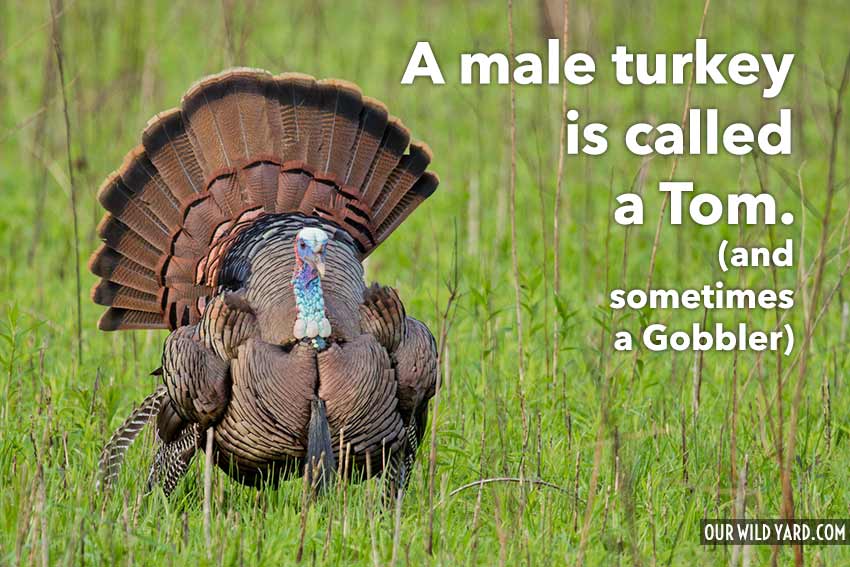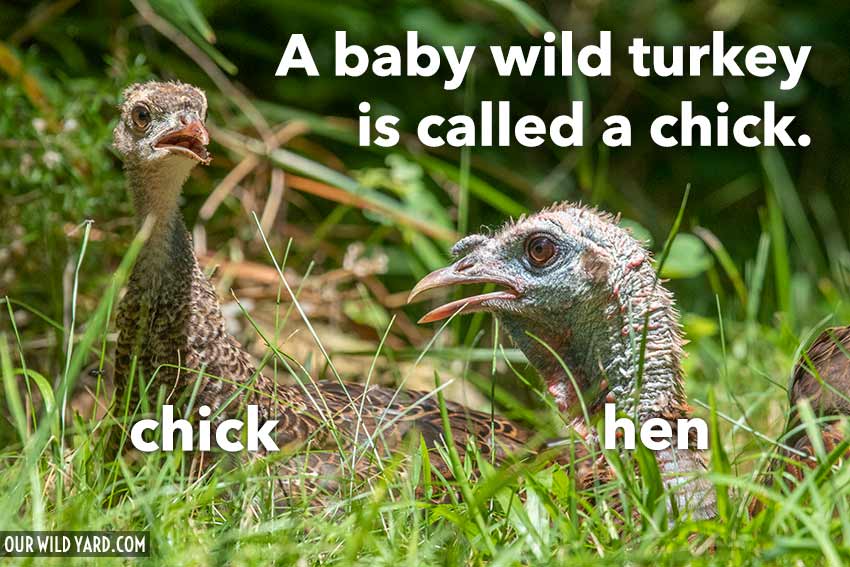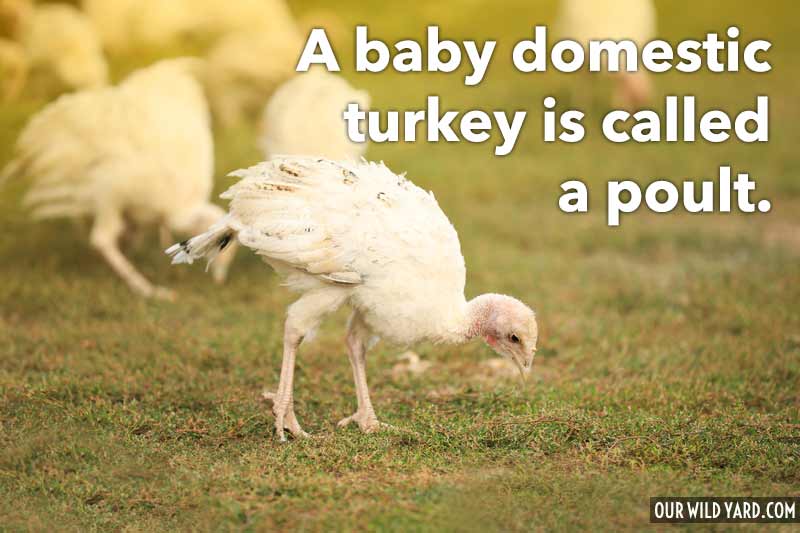Today I had an amazing encounter with a family of turkeys in our yard. Two baby turkeys and their mother spent more than an hour relaxing and walking around. I wrote all about the encounter here (turkey vs. bird garden statue), but while I was writing, I couldn’t help but wonder what the proper name for a baby turkey is. Well, I know now! Let’s get started and find out!
The world of turkeys can be surprisingly complex, especially when it comes to deciphering their various names and unique characteristics. This guide dives deep into the fascinating realm of female turkeys, exploring their terminology, physical traits, and intriguing behaviors.
What is a female turkey called?
The answer is simple: a female turkey is called a hen. This term applies to both wild and domesticated turkeys, making it the universal name for the fairer sex of this avian species.
Distinguishing the Male and Female Turkey: A Tale of Two Genders
While both male and female turkeys belong to the same species, several key differences set them apart. Let’s delve into their distinctive features:
Male Turkey (Tom or Gobbler):
- Size: Male turkeys, also known as toms or gobblers, are typically larger than females, with a more robust build.
- Plumage: Toms sport vibrant, iridescent feathers, often featuring metallic hues of green, bronze, and copper. Their tails are particularly striking, displaying an impressive fan of feathers.
- Vocalizations: The iconic “gobble” sound is a trademark of male turkeys, used to attract mates and establish dominance.
Female Turkey (Hen):
- Size: Hens are generally smaller than toms, with a more slender build.
- Plumage: Hens have less flamboyant plumage compared to toms, with their feathers typically exhibiting a muted brown or gray coloration.
- Vocalizations: Hens produce a softer, clicking sound, often used to communicate with their young or other hens.
A Deeper Look into the Female Turkey’s World
Beyond their name and physical characteristics, female turkeys exhibit fascinating behaviors that contribute to their survival and reproductive success. Let’s explore some of their unique traits:
Nesting and Brood Care:
- Nest Building: Hens meticulously construct nests on the ground, often hidden beneath bushes or other vegetation, to provide a safe haven for their eggs.
- Egg Laying: Hens lay clutches of around 8 to 16 eggs, which they incubate for approximately 28 days.
- Brood Rearing: After hatching, the mother hen fiercely protects and cares for her chicks, guiding them in their early days and teaching them essential survival skills.
Social Dynamics:
- Flock Formation: Hens often form close-knit flocks with other females and their young, providing a sense of safety and companionship.
- Communication: Hens use a variety of vocalizations and body language to communicate with each other, including clucking, chirping, and wing flapping.
- Social Hierarchy: Within flocks, hens may establish a social hierarchy, with older or more experienced hens holding a higher rank.
Adaptability and Resilience:
- Habitat Diversity: Female turkeys can thrive in a variety of habitats, including forests, grasslands, and even urban areas.
- Resourceful Foraging: Hens are skilled foragers, adept at finding and consuming a wide range of food sources, including seeds, berries, insects, and small reptiles.
- Predator Avoidance: Hens exhibit remarkable vigilance, constantly scanning their surroundings for potential predators and using various strategies to avoid detection.
Female turkeys play a crucial role in the survival and continuation of their species. Their nurturing instincts, adaptability, and resilience make them essential members of the avian world. By understanding their unique characteristics and behaviors, we gain a deeper appreciation for the remarkable diversity and complexity of the natural world.
So What is a Group of Turkeys Called?
A group of turkeys is called a flock. Some folks may tell you that a group of turkeys is called a rafter, but much like a “murder of crows” it’s not really used by researchers or in common language, only by folks who like to show off their knowledge of obscure trivia from very old books (like the Book of Saint Albans 1486).

While chick and flock seem like pretty common bird names, there are a few more unusual turkey names. An adult male turkey is called a Tom or a Gobbler. An adult female turkey is a hen. A juvenile male turkey may be called a Jake while a juvenile female turkey might be referred to as a Jenny (according to the Maryland DNR)

So let’s put some of our new lingo into use with an interesting turkey fact! Tom’s take no part in raising the chicks. The hen will raise them by herself and eventually may band into a flock with other hens and their broods! (find other cool turkey info from the Cornell Lab of Ornithology)
What is the Correct Name for a Baby Turkey?
The correct name of a baby turkey depends on which kind of turkey you’re talking about. There are only two wild turkey species worldwide; the one that most Americans are likely to encounter strolling through their backyard is the Wild Turkey (Meleagris gallopavo), which can be found in every U.S. S. state except Alaska. The Ocellated Turkey (Meleagris ocellata) is only found in the Yucatán Peninsula of Mexico. Any wild baby turkey is called a chick. That shouldn’t be hard to remember, it’s just like a chicken!.

If you’re referring to domestic turkeys, the kind raised on farms that you might eat for Thanksgiving, the response is a little different. Although they can still be referred to as chicks, poults are a more common term for baby domestic turkeys. Domestic turkeys are actually descended from the wild turkey, which were likely first domesticated by the Mayans in Mexico up to 2,000 years ago! It’s like the word poultry with the end cut off.

Although it can be used for any domesticated bird raised for food, such as pheasants or chickens, hatch is most commonly used for baby turkeys.
